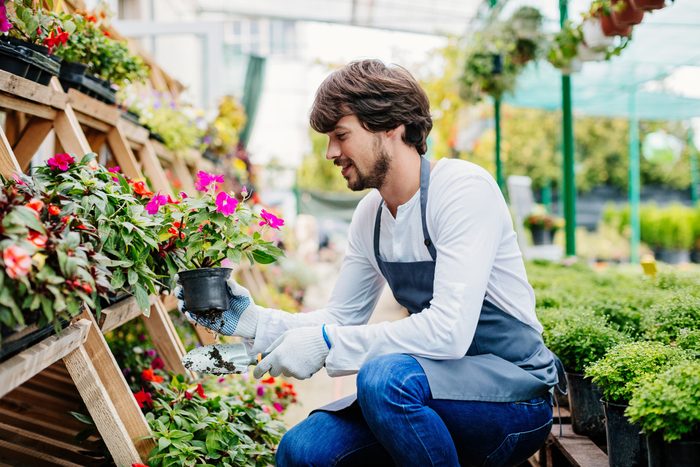Sprout into Springtime: Newbie Gardening 101 for Expanding a Lively Yard Oasis
Wiki Article
From Newbie to Environment-friendly Thumb: A Step-by-Step Journey With the Art of Horticulture

Understanding Your Horticulture Area
To begin your horticulture journey, it is crucial to recognize the special characteristics and constraints of your gardening room. Take a minute to observe your surroundings. Is your room little or large? Is it subjected to full sunlight or does it get partial color? Are there any kind of particular challenges you may deal with, such as poor dirt quality or minimal water accessibility? Recognizing these elements will aid you make notified choices about the sorts of plants that will flourish in your area.Consider the dimension of your horticulture location. You might need to focus on container gardening or upright gardening to maximize your growing area if you have a little area. On the other hand, if you have a huge space, you have the luxury of growing a variety of plants and developing different zones within your yard.
If your space is shaded, you can opt for shade-loving plants like hostas or brushes (newbie gardening). If your area obtains full sunlight, you can expand a wide array of plants, consisting of herbs, veggies, and flowers.
Last but not least, consider any type of constraints or difficulties certain to your area. If your soil high quality is bad, you may require to change it with compost or pick plants that are tolerant of less-than-ideal conditions. You can opt for drought-tolerant plants or apply water-saving strategies like mulching. if water is limited.
Choosing the Right Plant Kingdoms for Your Garden
Select plants that are well-suited to your garden's special problems and your personal choices. When choosing plants for your yard, it is important to think about variables such as sunshine, soil kind, and environment. Some plants prefer well-drained soil, while others prosper in wet or clay-like dirt.Another essential element to take into consideration is your individual choice. Do you prefer a yard filled with vibrant flowers, or are you a lot more curious about expanding natural herbs and veggies? Think of the objective you desire your yard to offer and the visual you wish to achieve. It's likewise worth thinking about the upkeep level of the plants you choose. Some plants need more care and attention, while others are much more low-maintenance.
Preparing the Soil for Planting
First, assess the problem of your soil to determine if any amendments or renovations are needed. The quality of your soil is crucial for the success of your yard. Beginning by checking the appearance of the dirt. Is it sandy, loamy, or clayey? Sandy soil drains pipes swiftly, while clayey soil keeps water. Loamy dirt is the suitable balance between the 2. Next off, examine the pH degree of your soil. Most plants choose a somewhat acidic to neutral pH, around 6.0 to 7.0. You may require to change it utilizing soil modifications such as lime or sulfur if your soil is too acidic or alkaline. In addition, you ought to consider the vitamins and mineral material of your soil. If any essential nutrients are doing not have, Conduct a soil examination to determine. This will certainly help you decide which plant foods or raw material to add. Finally, ensure that your dirt is well-draining. Poorly drained pipes dirt can result in water logged roots and various other plant health concerns. Boost drainage by including natural matter like compost or peat moss if essential. By evaluating and making required modifications to your dirt, you can create an ideal setting for your plants to thrive.Nurturing and Maintaining Your Garden
Make sure to sprinkle your plants deeply, allowing the water to pass through the soil and get to the roots. Normal weeding is also vital to keep your yard free from undesirable plants that complete for nutrients and space. Regularly examine your plants for any kind of signs of problem or illness and take instant action to prevent additional damages.Troubleshooting Common Gardening Issues
To resolve common horticulture concerns, start by recognizing the issue and taking prompt action. One of one of the most common problems garden enthusiasts encounter is insects. You might have a parasite infestation if you discover chewed leaves or plants that are shriveling for no obvious factor. Evaluate your plants closely for signs of bugs or various other parasites. Remove them manually or utilize natural bug control approaches if you detect any. Another common problem is nutrition shortage. If your plants have yellow or stained leaves, they may not be getting enough nutrients. Consider fertilizing your dirt or including garden compost to enhance its nutrition material. Overwatering is one more issue that can damage your plants. If you see water logged dirt or wilting in spite of appropriate watering, you may be overwatering. Readjust your watering timetable appropriately and guarantee proper drain. Lastly, illness can also influence your yard. It might be an indication of disease if you see places, mold, or unusual development on your plants. blog Eliminate affected plants and deal with the staying ones with natural fungicides or pesticides. By without delay resolving these typical problems, you can make sure the health and success of your yard.Verdict
By understanding your gardening area, picking the right plants, preparing the dirt, and supporting your garden, you have conquered typical gardening problems like a pro. Currently, equipped with expertise and experience, you are all set to appreciate the beauty and abundance of your flourishing yard.
When selecting plants for your garden, it is vital to think about factors such as sunshine, soil kind, and climate. Some plants favor well-drained dirt, while others prosper in clay-like or wet soil (newbie gardening). By understanding your horticulture space, picking the right plants, preparing the soil, and supporting your garden, you have resource actually overcome typical you can try this out gardening problems like a pro
Report this wiki page